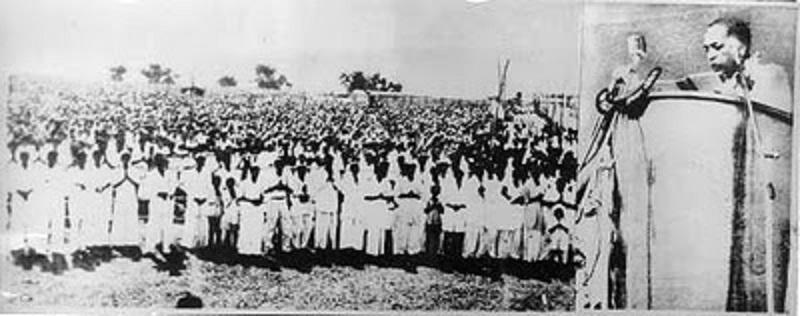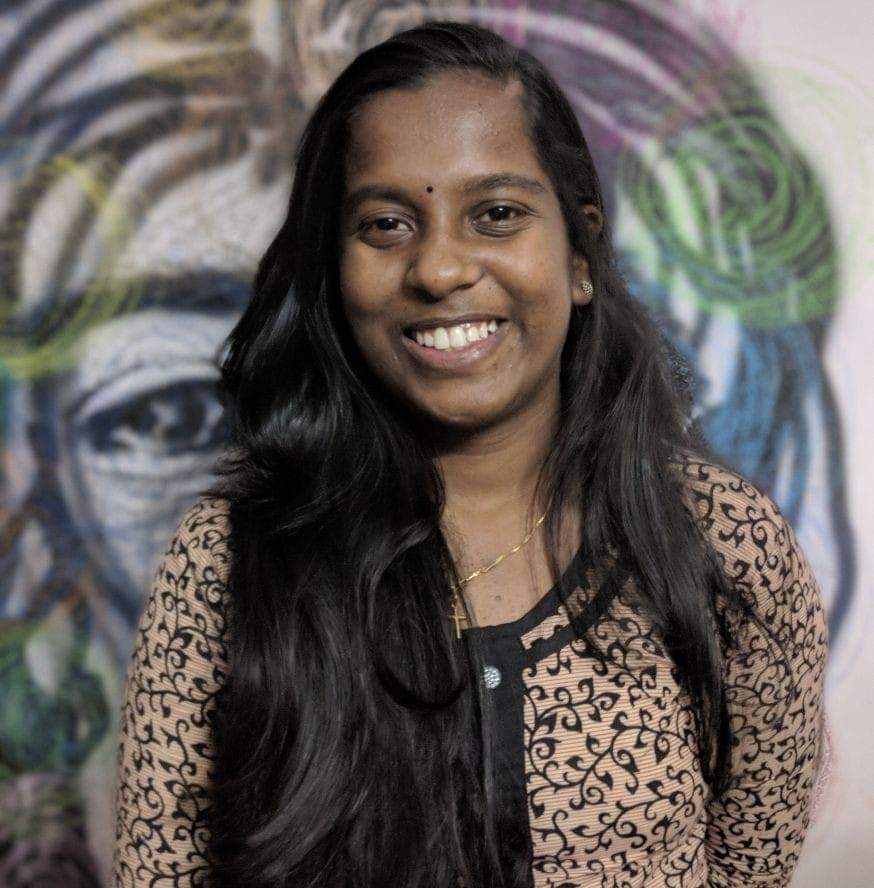Karthik Navayan

In 1935, while addressing the Yeola Conversion Conference, Dr. BR Ambedkar declared ‘I am born a Hindu. I couldn’t help it, but I solemnly assure you that I will not die a Hindu’. He said: ‘Hindu civilsation.. is a diabolical contrivance to suppress and enslave humanity’. It was created by Brahminical parasites to enslave people and perpetuate their control over all the power and wealth of the nation. Hindu Brahmanic religion, which is responsible for the caste system of graded inequality, untouchability, exploitation and oppression, had introduced the theories of Karma and rebirth to justify them. And to perpetuate all those social evils it created the Vedas, Upanishads and the Puranas. The Hindu religious system is continuing its repression in all fields even today.
In this process, the efforts made by Dr. BR Ambedkar, in his search for a way of life which allowed every individual’s personality to bloom in a society infused with high cultural values and which respected liberty, social, political and economic equality, led him towards Buddhism. It was the Buddha, the philosopher and leader of a social democratic revolution, who was the first to preach the universal ideals of peace, non-violence, compassion and equality, before all other spiritual leaders. He declared that ‘you are your own master; you have to build your future on your own’ and made it clear that his words are not sermons from God. He also said that his teachings can be modified in accordance with societal changes. All the prophets after the Buddha emphasized that their words were God’s own and commanded that all human beings must follow their precepts. This is the basic difference between Buddha and other prophets, between Buddhism and other religions.

When Dr. BR Ambedkar declared that he was going to change his religion, major religious leaders from Christianity, Islam and Sikhism came forward with many proposals and promises to provide many benefits to Dalits, to render economic assistance to them and work for their development if Babasaheb converted to any of those religions. Gently rejecting all their propositions, Dr. BR Ambedkar declared that he was going to adopt Buddhism. Buddhism which originated in India and spread across the world, disappeared from this land because of constant attacks from Brahminical forces. We have historic evidences to substantiate the fact that the Brahmins of Hindu religion, like Chanakya and Sankaracharya, encouraged rulers to kill Buddhist monks in order to exterminate Buddhism in India. Kandukuri Veershalingam Panthulu, in his autobiography, refers to the gruesome practice of killing of Buddhist monks en masse by throwing them into oil mills. Even as the process of physical attacks on Buddhism was in progress, one Brahmin called Nagarjuna ruined Buddhism by forming a separate sect called Mahayana Buddhism. In this manner, Buddhism vanished from Indian soil because of physical and cultural attacks. Dr. BR Ambedkar succeeded in directing people’s thoughts towards Buddhism, which had only a nominal presence in India then, by declaring that he would embrace it.
Following Dr.B.R.Ambedkar’s announcement of his decision to embrace Buddhism, many intellectuals and journalists belonging to other religions raised some questions: ‘there are three main branches named Hinayana, Mahayana and Vajrayana in Buddhism– which branch of Buddhism will you embrace?’ Dr. BR Ambedkar replied that he was not going to accept any of the three branches but was going to embrace the true legacy of the Buddha, and that was ‘Navayana Buddhism’.
 Dr. BR Ambedkar, in accordance with his decision and in a mass event without any precedent in world history, embraced Buddhism along with nearly 5, 00,000 followers on 14th October 1956 (on Ashoka Vijayadasami). Nagpur became the platform for this programme. This initiation ceremony (Dhamma Diksha) was finished after the preaching of Thrisarana, Panchasila and the Ashtanga path to Dr. BR Ambedkar was completed by Buddhist monk Mahasthavira Chandramani. After that, Bodhisatva Dr. BR Ambedkar preached Buddhist sermons to 5 lakh followers in person. Not stopping with that, he administered to his five lakh followers 22 vows which must be followed by every convert to Buddhism. These were not a part of Buddhist practice until then.
Dr. BR Ambedkar, in accordance with his decision and in a mass event without any precedent in world history, embraced Buddhism along with nearly 5, 00,000 followers on 14th October 1956 (on Ashoka Vijayadasami). Nagpur became the platform for this programme. This initiation ceremony (Dhamma Diksha) was finished after the preaching of Thrisarana, Panchasila and the Ashtanga path to Dr. BR Ambedkar was completed by Buddhist monk Mahasthavira Chandramani. After that, Bodhisatva Dr. BR Ambedkar preached Buddhist sermons to 5 lakh followers in person. Not stopping with that, he administered to his five lakh followers 22 vows which must be followed by every convert to Buddhism. These were not a part of Buddhist practice until then.
- I shall have no faith in Brahma, Vishnu and Mahesh nor shall I worship them.
- I shall have no faith in Rama and Krishna who are believed to be incarnation of God nor shall I worship them.
- I shall have no faith in ‘Gauri’, Ganapati and other gods and goddesses of Hindus nor shall I worship them.
- I do not believe in the incarnation of God.
- I do not and shall not believe that Lord Buddha was the incarnation of Vishnu. I believe this to be sheer madness and false propaganda.
- I shall not perform ‘Shraddha’ nor shall I give ‘pind-dan’.
- I shall not act in a manner violating the principles and teachings of the Buddha.
- I shall not allow any ceremonies to be performed by Brahmins.
- I shall believe in the equality of man.
- I shall endeavour to establish equality.
- I shall follow the ‘noble eightfold path’ of the Buddha.
- I shall follow the ‘paramitas’ prescribed by the Buddha.
- I shall have compassion and loving kindness for all living beings and protect them.
- I shall not steal.
- I shall not tell lies.
- I shall not commit carnal sins.
- I shall not take intoxicants like liquor, drugs etc.
- I shall endeavour to follow the noble eightfold path and practise compassion and loving kindness in every day life.
- I renounce Hinduism which is harmful for humanity and impedes the advancement and development of humanity because it is based on inequality, and adopt Buddhism as my religion.
- I firmly believe the Dhamma of the Buddha is the only true religion.
- I believe that I am having a re-birth.
- I solemnly declare and affirm that I shall hereafter lead my life according to the principles and teachings of the Buddha and his Dhamma.
Dr. BR Ambedkar worked for the rejuvenation of Buddhism in India by marching into Buddhism along with 5 lakh followers. He also endeavoured to clear all the apprehensions and exaggerations which clouded perceptions about Buddhism in those days. Dr. BR Ambedkar offered Buddhism as a way of life for all sections of Indian society. In this way, Dr. BR Ambedkar laid a strong foundation for a new cultural revolution in India. In his book, ‘Buddha and his Dhamma’, which remains a seminal text on contemporary Buddhism, Dr.B.R.Ambedkar unveiled a scientific perspective on Buddhism. He refuted the popular myth that after watching an old man, a sick person and a dead body, the Buddha was so moved that he became a monk. He also rejected the theories of rebirth and Karma because they were wrongfully attributed to the Buddha who never propagated any such concepts. It was during the course of his efforts to spread this Dhamma revolution across the country that he attained Mahaparinirvana on 6th December, 1956. This responsibility now lies on the shoulders of Dr. BR Ambedkar’s followers. But those efforts are not being carried ahead at the pace envisaged earlier. The current state of that revolution is quite sad with some followers worshipping the Buddha and Ambedkar as Gods. Efforts must be initiated by responsible followers of Dr.BR Ambedkar to carry forward his ideology. Only people who have retired from their jobs and movements are talking about Buddhism. Youth should carry forward this philosophy in a vigorous manner. Attempts are being made in that direction now. Efforts to restrict Dr. BR Ambedkar and Buddha to the devotional and spiritual spheres are equivalent to self-deception. Every citizen of this country should accept Dr. BR.Ambedkar and Buddha as their social, democratic, revolutionary leaders who fought relentlessly against caste discrimination, slavery, repression, exploitation and inequality and carry forward their philosophy. Equality and democracy can be achieved only through Buddhism.
 The Buddha, in his time, took necessary steps to ensure that the proper implementation of democracy was interwoven into the legal framework of the country. He had built the Sangha as a model democractic society to follow. Even the Buddha was a common member in the Sangha of monks, with no special privileges. No special status was assigned to the Budha in the Sangha. Any suggestions for reforms were customarily introduced in the sangha, or assembly, for debate and consideration and were passed only after a majority of members had voiced their opinion on it. The institutions of Speaker, general body, discussion, resolution: all these were conceived and implemented two thousand years ago by the Buddhist Sangha. All the transactions related to public administration took place in the people’s language.
The Buddha, in his time, took necessary steps to ensure that the proper implementation of democracy was interwoven into the legal framework of the country. He had built the Sangha as a model democractic society to follow. Even the Buddha was a common member in the Sangha of monks, with no special privileges. No special status was assigned to the Budha in the Sangha. Any suggestions for reforms were customarily introduced in the sangha, or assembly, for debate and consideration and were passed only after a majority of members had voiced their opinion on it. The institutions of Speaker, general body, discussion, resolution: all these were conceived and implemented two thousand years ago by the Buddhist Sangha. All the transactions related to public administration took place in the people’s language.
The first person to state and enforce the principle that women are equal to men in all aspects was the Buddha. It was Buddha who formed a separate wing for women in the Sangha. Many women monks like Kisa Gouthami, Sumangala, Sujata, the beggar Kapa’s daughter, and the daughter of King Asoka, Sangha Mitra, amassed great knowledge and helped in spreading Buddhism across China, Japan, Burma, Bhutan, Srilanka, Korea, Taiwan and Thailand, on par with men.
The political and economic ideas of Gouthama Buddha are ideal for the present day world. These were elaborated in the book ‘Kutadantha Sutta‘. Addressing a small gathering at a village called Alavi Buddha said: ‘the main reason for violence and unrest is hunger. It is the duty of all citizens to to come to the aid of the starving. It is the responsibility of all societies to ensure that no one suffers from hunger’.
Gautama Buddha taught the King of Kosala, Prasena Jit the principles of good economic policy and publich administration:
Crime can not be eradicated by punishing or executing criminals. Every citizen’s economic security should be ensured. Employment must be provided to everyone. Farmers should be supported in their efforts to produce enough food for all of society. Pensions should be provided for senior citizens. No taxes should be imposed on the poor. Workers and peasants should not be subjected to any oppression or exploitation. The State should ensure that individuals are trained in professions of their choice. The rulers should lead a simple idealistic life by eschewing all luxuries and extravagance. The leader should should endeavour to earn the trust of the people and not money. He should thus inspire the people to follow him.
On foreign relations, Gautama Buddha said:
Your state will not be secure and prosperous when there is poverty and instability in your neighbouring state. Only when there is positive understanding with your neighbours, will there be peace and prosperity. You should show the same love towards the people of your neighboring state as you shower on your own people.
Therefore, the Buddha’s teachings are still relevant to us in India, in all areas. There is no other way for India but to follow the path shown by Dr.Baba Saheb B.R.Ambedkar who rediscovered Buddhism which had become extinct in the country after being made the target of continuous physical and cultural assaults launched by brahminical forces, and gifted it to us. For the large masses of people of this country who are getting crushed under the wheels of Jagannath’s chariot of oppression, Buddhism is the only path to liberation.
~~~
‘A Buddhist is not a slave to any individual or book.
Although a Buddhist seeks refuge in the Buddha, he does not make any self-surrender. Nor does a Buddhist sacrifice his freedom of thought by becoming a follower of the Buddha. He can exercise his own free will and develop his knowledge even to the extent of becoming a Buddha himself.’
~ Narada Maha Thera
~~~
Karthik Navayan is a human rights activist.
Translated from Telugu by Kuffir.










